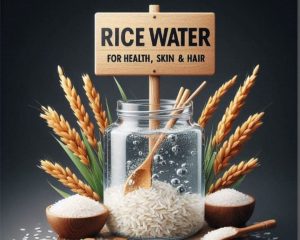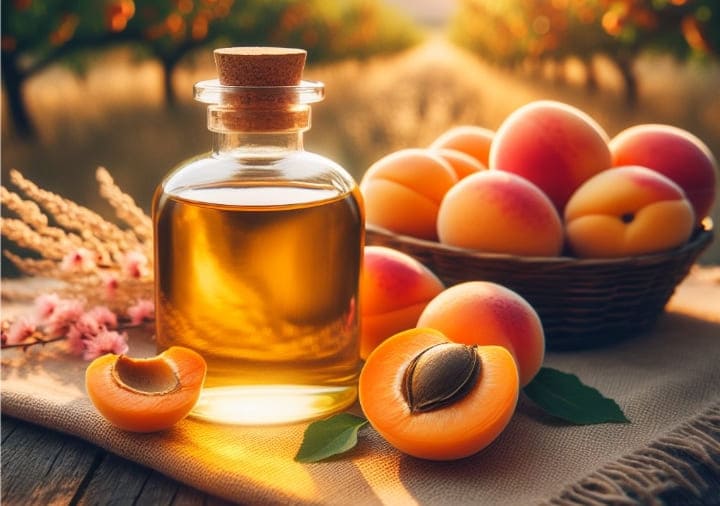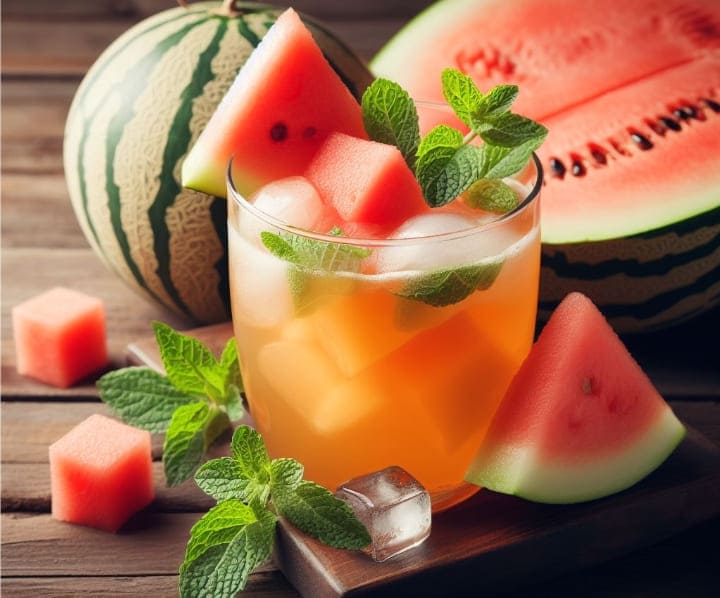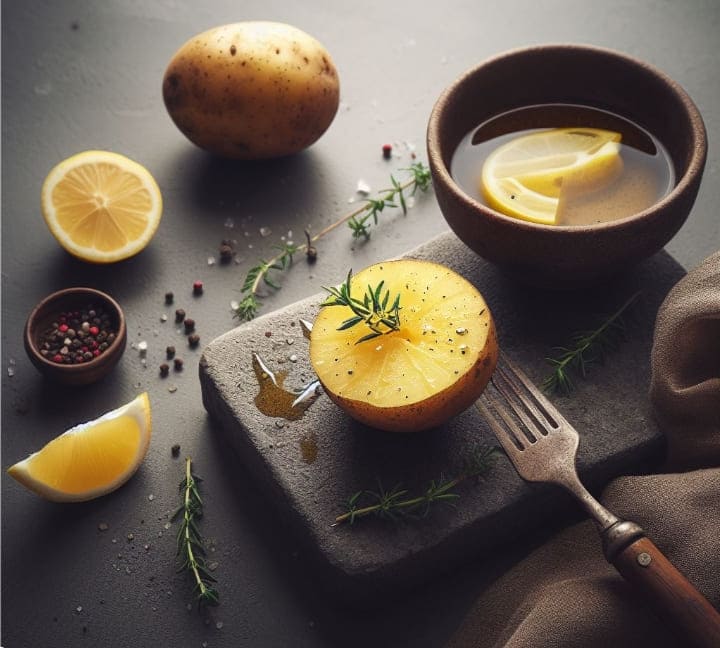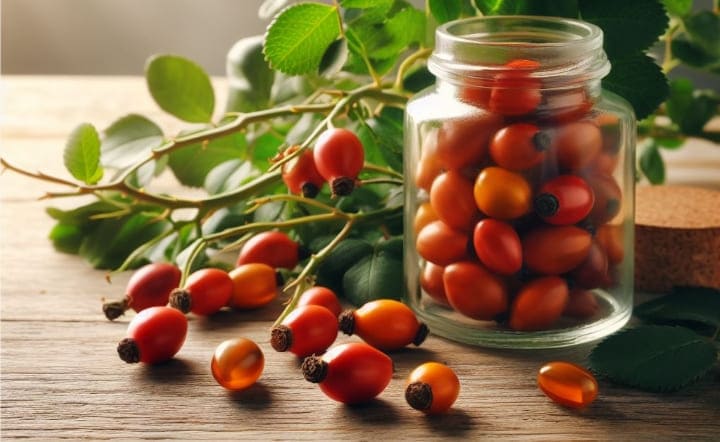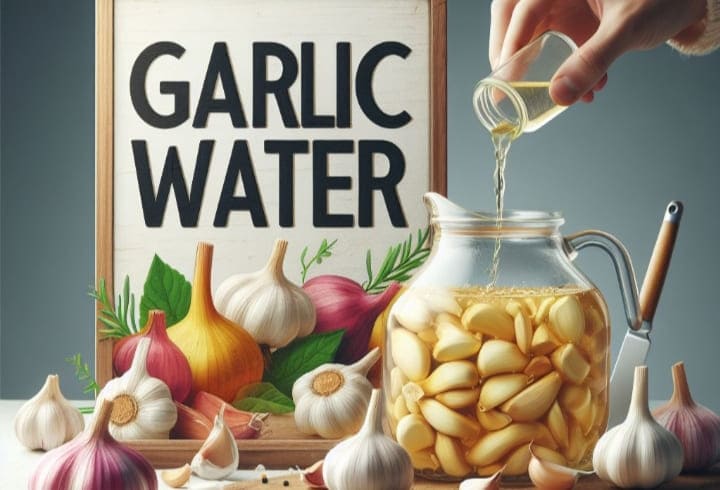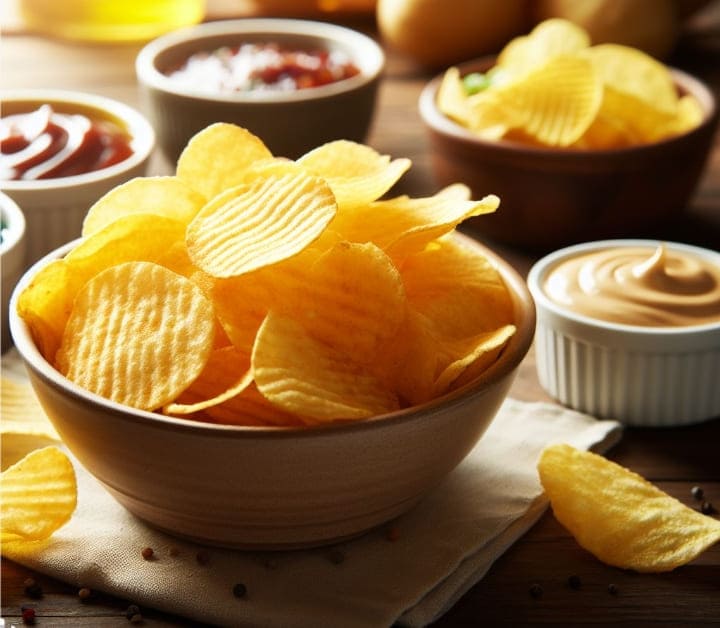
Potato crisps, also known as potato chips, are a popular snack enjoyed by people of all ages around the world. These crispy and flavorful treats are not only delicious but also offer several benefits. In this article, we will explore nine (9) Incredible advantages and benefits of potato crisps (chips) and why they can be a part of a balanced diet as well as how to make a super healthy potato chips.
Nutritional Profile of Potato Crisps (Chips)
Potato chips are a popular snack enjoyed worldwide. They are typically made by slicing potatoes thin, frying or baking them until crispy, and seasoning them with salt or various flavorings.

Here’s an overview of the nutritional profile of a standard serving (about 1 ounce or 28 grams) of potato crisps (chips):
- Calories: Potato crisps provide approximately 152 calories per ounce.
- Carbohydrates: They contain around 15 grams of carbohydrates, primarily from starch.
- Fat: Potato crisps are relatively high in fat, with about 10 grams per ounce. This fat content contributes to their crispy texture and rich flavor.
- Protein: Potato crisps have minimal protein content, providing about 2 grams per ounce.
- Fiber: They contain very little dietary fiber, typically less than 1 gram per ounce.
- Sodium: Potato crisps are known for their high sodium content, with around 136 milligrams per ounce or more, depending on the brand and seasoning.
- Vitamins and Minerals: While potato crisps are not a significant source of vitamins and minerals, they do provide some potassium and a small amount of vitamin C.
It’s essential to note that the nutritional values can vary based on the brand, preparation method, and flavorings used. Many commercially produced potato crisps may also contain additives and preservatives.
Due to their high fat and sodium content, it’s recommended to enjoy potato crisps in moderation. For a healthier option, consider homemade potato crisps where you can control the ingredients and seasonings, or explore alternative snacks that provide more nutritional value and fewer additives.
What are the Benefits of Potato Crisps
Potato crispy (chips) are flavorful treats that are not only delicious but also offer several benefits. Lets explore nine (9) advantages and benefits of potato crisps and why they can be a part of a balanced diet.
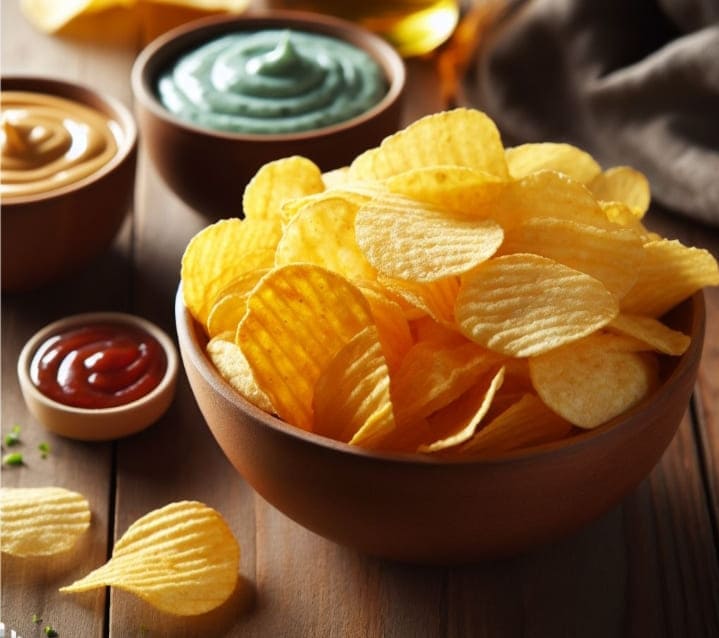
Benefit 1. Portable and Convenient
One of the significant benefits of potato crisps is their portability and convenience. They come in handy, single-serving packages that are easy to carry and enjoy on the go. Whether you’re traveling, at work, or simply looking for a quick snack, potato crisps can satisfy your cravings without the need for preparation or utensils.
Benefit 2. Variety of Flavors
Potato crisps come in a wide range of flavors, catering to different taste preferences. From classic salted to tangy barbecue, spicy jalapeno to savory sour cream and onion, there is a flavor for everyone. This variety allows individuals to choose their favorite flavors and enjoy a satisfying snack experience.
Benefit 3. Source of Energy
Potato crisps are a source of energy due to their carbohydrate content. Carbohydrates are the body’s primary source of fuel and provide the energy needed for daily activities. A small serving of potato crisps can give you a quick energy boost, making them a suitable snack for when you need a pick-me-up.
Benefit 4. Potassium Content
Potatoes, the main ingredient in potato crisps, are naturally rich in potassium. Potassium is an essential mineral that plays a vital role in maintaining proper heart and muscle function, as well as regulating blood pressure. Consuming potato crisps in moderation can contribute to your daily potassium intake.
a 100g serving of potato crisps contains more potassium than a similarly sized banana (1).
Related Posts
Benefit 5. Vitamin Content
Potato crisps contain essential vitamins, including vitamin C and vitamin B6. Vitamin C is an antioxidant that helps boost the immune system and promotes collagen production for healthy skin. Vitamin B6 is essential for brain development and function, as well as the production of red blood cells.
Benefit 6. Satiety and Portion Control
Despite their small size, potato crisps can help provide a sense of satiety due to their crunchy texture and flavor. This can help prevent excessive snacking and promote portion control. By enjoying potato crisps in moderation, you can satisfy your cravings without overindulging.
Benefit 7. Versatility in Recipes
Potato crisps can be used as a versatile ingredient in various recipes. Crushed potato crisps can serve as a flavorful coating for chicken or fish, adding a crispy texture to your dishes. They can also be used as a topping for salads, casseroles, or even as a garnish for soups. This versatility allows you to get creative in the kitchen and explore new flavors and textures.
Benefit 8. Enjoyment and Socializing
In addition to their nutritional benefits, potato crisps provide a sense of enjoyment and can enhance socializing experiences. Whether you’re sharing a bowl of crisps with friends while watching a movie or enjoying them at a party, they can add a fun and tasty element to your gatherings and create memorable moments.
Benefit 9. They are a Satisfy Snack
Potato crisps can cravings for salty and crunchy snacks, potentially reducing the temptation to overindulge in other less-healthy options. The satisfying crunch and savory flavor can help curb cravings and provide a sense of fullness. However, portion control is essential to avoid excessive calorie intake.
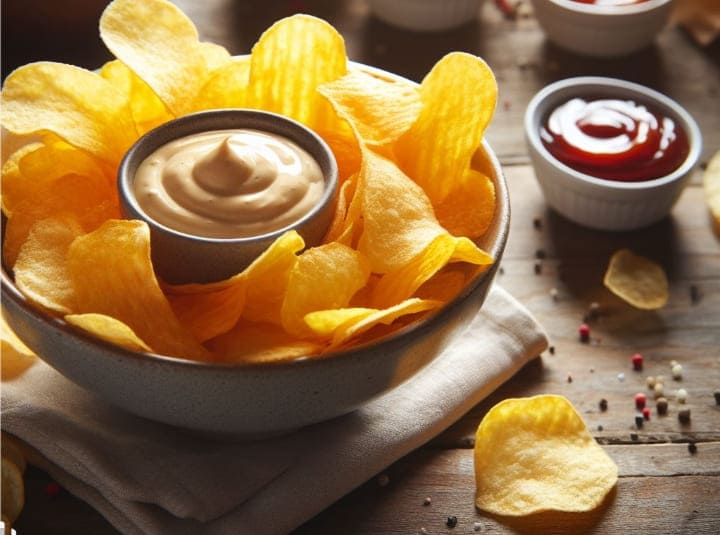
Potato crisps offer several benefits, including portability, a variety of flavors, a source of energy, and essential vitamins and minerals. However, it’s important to consume them in moderation as part of a balanced diet. By enjoying potato crisps responsibly, you can savor their delicious taste while reaping the advantages they offer. So go ahead, grab a pack of your favorite potato crisps, and indulge in a satisfying snack experience.
Incorporating Potato Crisps into a Balanced Diet
Incorporating potato crisps into a balanced diet can be done with a few mindful strategies to enjoy them as an occasional treat without compromising overall nutrition. Here are some tips for including potato crisps within a balanced eating plan:
- Practice Portion Control: One of the key aspects of a balanced diet is portion control. When consuming potato crisps, it’s crucial to stick to the recommended serving size, which is typically about 1 ounce or 28 grams. Avoid mindlessly snacking from a large bag, as it can lead to overconsumption.
- Balance with Nutrient-Rich Foods: To offset the lower nutritional value of potato crisps, balance your diet with nutrient-rich foods. Incorporate a variety of fruits, vegetables, whole grains, lean proteins, and dairy or dairy alternatives to ensure you receive essential vitamins and minerals.
- Mindful Snacking: Consume potato crisps mindfully. Pay attention to your hunger and fullness cues, and avoid snacking when you’re not truly hungry. Eating mindfully can help you savor the taste and texture of the crisps and prevent overindulgence.
- Choose Healthier Alternatives: When selecting potato crisps, opt for healthier alternatives when available. Look for brands that use minimal additives, lower salt content, and healthier oils for frying. Some brands also offer baked potato crisps as a lower-fat alternative.
- Homemade Potato Crisps: Consider making potato crisps at home. By doing so, you have full control over the ingredients, including the type of oil and seasonings used. Baking thin potato slices with a drizzle of olive oil and a pinch of sea salt can result in a healthier homemade version.
- Limit Frequency: While potato crisps can be enjoyed as an occasional treat, it’s essential to limit their frequency. They should not be a daily snack but rather an infrequent indulgence.
- Read Nutrition Labels: Be sure to check the nutrition labels on packaged potato crisps. Pay attention to the serving size, calorie content, fat, and sodium levels. Choose options that align with your dietary goals and restrictions.
- Stay Hydrated: It’s a good practice to stay well-hydrated when consuming salty snacks like potato crisps. Drinking water can help counterbalance the salt intake and promote overall hydration.
- Be Aware of Sodium Intake: Since many potato crisps are high in sodium, be mindful of your daily sodium intake. Excessive salt consumption can lead to high blood pressure, so it’s important to watch your overall sodium levels in your diet.
Remember that potato crisps are best enjoyed as an occasional treat rather than a dietary staple. By incorporating them mindfully and balancing them with nutrient-rich foods, you can indulge in potato crisps within the context of a balanced and healthy diet.
Recipe for Homemade Potato Chips (Crisps)
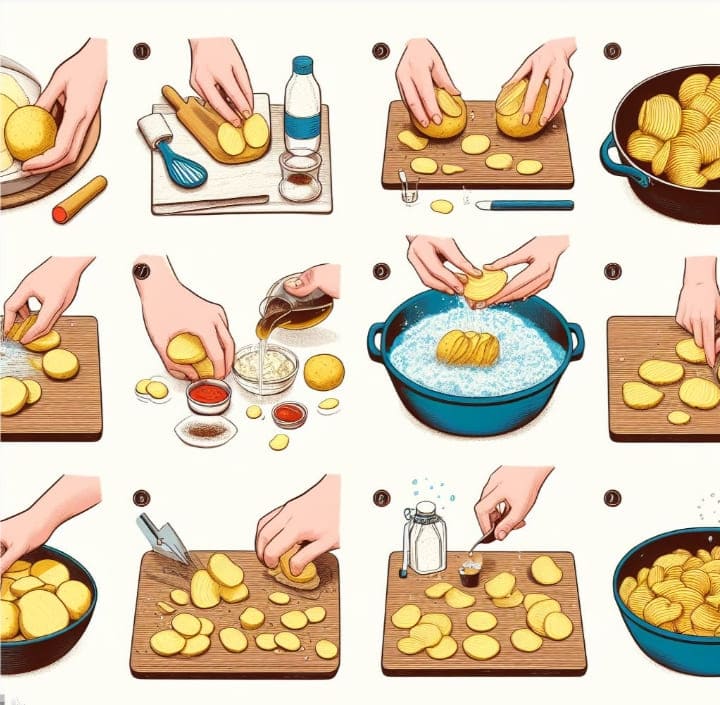
Making homemade potato chips (crisps) is a fun and satisfying way to enjoy this snack while controlling the ingredients. Here’s a simple recipe for classic homemade potato chips:
Ingredients:
- 2 large russet potatoes
- 2 tablespoons olive oil
- Salt and pepper to taste
- Optional seasonings (e.g., paprika, garlic powder, onion powder)
Instructions:
- Prepare the Potatoes:
- Wash and peel the potatoes (peeling is optional depending on your preference).
- Using a sharp knife or a mandolin slicer, slice the potatoes into thin, even rounds. Thinner slices will result in crispier chips.
- Rinse and Dry:
- Place the potato slices in a bowl of cold water and rinse them to remove excess starch.
- Pat the slices dry with a clean kitchen towel or paper towels.
- Preheat the Oven:
- Preheat your oven to 375°F (190°C).
- Season the Chips:
- In a large bowl, toss the potato slices with olive oil to coat them evenly. You can add a pinch of salt, pepper, and any desired seasonings (like paprika, garlic powder, or onion powder) to flavor the chips.
- Arrange on Baking Sheets:
- Line one or more baking sheets with parchment paper or a silicone baking mat. This prevents the chips from sticking and makes for easy cleanup.
- Arrange the seasoned potato slices on the baking sheets in a single layer, ensuring they do not overlap.
- Bake:
- Place the baking sheets in the preheated oven and bake for about 10-15 minutes. Check them regularly to prevent overcooking. Chips are done when they turn golden brown and crispy.
- Cool and Enjoy:
- Once the chips are done, remove them from the oven and let them cool on the baking sheets. They will continue to crisp up as they cool down.
- Serve:
- Once completely cool, transfer the homemade potato chips to a serving bowl or plate and enjoy.
These homemade potato chips are a healthier alternative to store-bought versions, as you can control the type and amount of oil and seasonings. You can experiment with different seasonings to create your favorite flavors. Whether you enjoy them plain or with a dip, homemade potato chips are a delicious snack to savor.
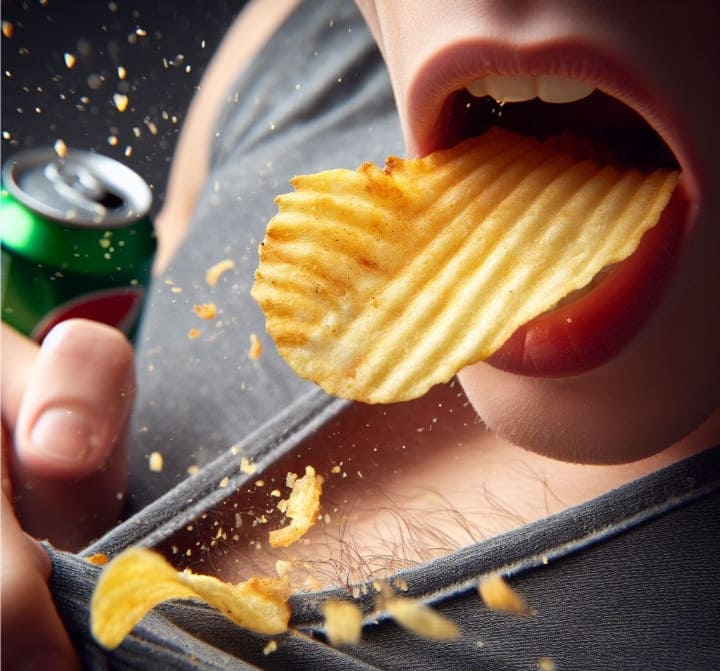
Risks from Eating too Much Potato Chips (Crisps)
Eating too many potato chips (crisps) can have various health risks, primarily due to their high levels of salt, unhealthy fats, and low nutritional value. Here are some of the potential risks associated with excessive potato chip consumption:
- Weight Gain: Potato chips are calorie-dense and often high in unhealthy fats. Overconsumption can lead to an excess of calories, contributing to weight gain when not balanced with physical activity.
- High Blood Pressure: The high salt (sodium) content in potato chips can elevate blood pressure. Consistent high sodium intake is associated with an increased risk of hypertension, which is a significant risk factor for heart disease and stroke.
- Cardiovascular Issues: Excessive consumption of chips, particularly those with unhealthy trans fats or saturated fats, can raise levels of “bad” LDL cholesterol in the blood. Elevated LDL cholesterol is linked to an increased risk of heart disease.
- Diabetes Risk: Regularly consuming high-calorie, low-nutrient foods like potato chips may contribute to insulin resistance and an increased risk of type 2 diabetes.
- Digestive Discomfort: The high fat content in chips can lead to digestive discomfort, including indigestion, heartburn, and bloating.
- Nutritional Deficiency: Potato chips are not a good source of essential nutrients. If they become a significant part of your diet, they can displace more nutritious foods, potentially leading to nutrient deficiencies.
- Salt Addiction: The salty and savory flavor of potato chips can lead to a desire for more salty snacks and foods, potentially fostering a salt addiction that makes it challenging to reduce sodium intake.
- Acrylamide Formation: When potato chips are cooked at high temperatures, they can form acrylamide, a chemical compound that is a potential carcinogen. Although the risk from acrylamide in food is still being studied, it’s advisable to limit its consumption.
- Unhealthy Eating Patterns: Regularly eating potato chips can contribute to unhealthy eating patterns and cravings for other less nutritious foods, potentially leading to an imbalanced diet.
To minimize these risks, it’s important to enjoy potato chips in moderation. Consider healthier snack alternatives like whole-grain crackers, air-popped popcorn, or vegetable sticks with hummus.
When indulging in potato chips, choose options with lower salt content, minimal additives, and trans fat-free oils. Maintaining a well-balanced diet that includes a variety of nutrient-rich foods is key to reducing the potential health risks associated with potato chip consumption.
Here are Similar articles for you to checkout:
